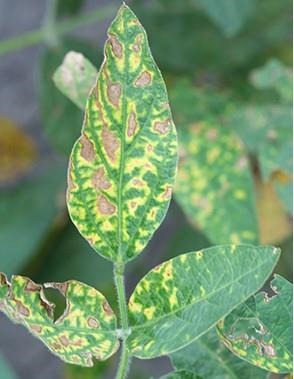By Alejandra Arevalo-Mayorga and Sam Locke et.al
What is Salmonella Dublin?
Salmonella Dublin (S. Dublin) is an emerging concern in dairy and dairy-beef operations. This bacteria primarily affects cattle but can also pose risks to human health. Unlike other strains of Salmonella, S. Dublin often causes invasive systemic infections, leading to high levels of death loss in calves, chronic carrier states, and economic losses in dairy and dairy-beef operations.
How Prevalent is Salmonella Dublin in Dairy-Beef Farms?
The prevalence of S. Dublin in dairy-beef farms, along with key risk factors associated with its detection, was examined between June 2023 and November 2024 across 63 dairy-beef farms in seven states (Figure 1). The One Herd Lab at Ohio State University (OSU) collaborated with veterinary clinics to conduct a survey assessing farm demographics, herd management, calf movement, and biosecurity practices. Additionally, environmental samples (up to seven boot swabs per farm) were collected from calf housing areas, including pre-weaned alleys, milk mixing rooms, and post-weaned pens. These samples were analyzed using multiplex PCR to detect S. Dublin.

Figure 1. This map illustrates the county-level distribution of 63 dairy-beef farms enrolled in the study. The size of each red dot represents the number of farms in that location, with larger dots indicating a higher concentration of sampled farms. Neighboring states are grouped into three categories for regional analysis: Indiana-Ohio-New York (blue), Iowa-Wisconsin (purple), and Kansas-Missouri (green).
S. Dublin was detected in 33.3% of dairy-beef farms (21 out of 63 farms surveyed), with 19.8% of environmental samples (48 out of 243) testing positive. In most positive farms (56.5%; 12 out of 23), only one environmental sample tested positive.
Additionally, S. Dublin was consistently detected across different sample locations, with approximately 20% of samples from pre-weaned calf alleyways, milk mixing rooms, and post-weaned pens testing positive (Figure 2). This finding highlights widespread environmental contamination within operations, emphasizing the need for effective management strategies to reduce pathogen spread.

Figure 2. Prevalence of S. Dublin in dairy-beef farms by PCR at both the farm level (red bar), sample level (grey bar), and across different environmental sampling locations (outlined bars).
What Are the Risk Factors Associated with S. Dublin Detection?
The study found that frequent calf introductions and purchasing animals from auctions or calf dealers were the two biggest risk factors for S. Dublin in dairy-beef farms.
Farms that bring in new calves more often—specifically, every 9 weeks or less—had twice the risk of detecting S. Dublin compared to farms that introduce calves less frequently. About 32% of farms that brought in new calves frequently tested positive for S. Dublin, compared to 18% of farms that introduced calves less often.
Farms that buy calves from auctions were 1.5 times more likely to detect S. Dublin compared to farms that purchase directly from local dairy farms. Specifically, about 22% of farms sourcing calves from auctions tested positive, whereas farms with local dairy-sourced had a lower risk. This indicates that calves from auctions or dealers may carry a higher risk of introducing S. Dublin onto the operation.
Regardless of management practices or biosecurity measures, our study did not find a clear link between S. Dublin detection and factors such as farm type (pre-weaned only, post-weaned only, or both), calf age at weaning or exit, continuous vs. all-in/all-out calf flow, downtime between groups, farm size, or geographic location.
This does not necessarily mean these factors have no effect—it is possible that our sample size was not large enough to detect a relationship. In fact, some of the practices, including managing in an all-in-all-out pattern, are well known to reduce the risk for some pathogens. Further research is needed to better understand how these factors might contribute to S. Dublin transmission.
How Can Dairy Producers Reduce the Risk of Salmonella Dublin?
While changing the timing of new calf introductions may not be practical, limiting direct contact between calves from different sources, along with thorough health monitoring, can help reduce S. Dublin transmission. Whenever possible, selective calf sourcing is recommended—purchasing calves from trusted suppliers with known health histories can significantly lower the risk of introducing S. Dublin into your operation. Additionally, enhancing farm biosecurity is key to preventing environmental contamination. This includes maintaining proper cleaning and disinfection of calf housing areas, using separate protective equipment for different age groups, and ensuring that workers handling young calves follow strict hygiene protocols. Implementing these measures collectively strengthens disease prevention and improves overall herd health.
Final Thoughts for Ohio Dairy Farmers
Salmonella Dublin remains an important health and management challenge for dairy and dairy-beef producers. While completely eliminating the risk is difficult, implementing better sourcing decisions, improving calf introduction strategies, and biosecurity measures can significantly reduce its impact.
Source : osu.edu